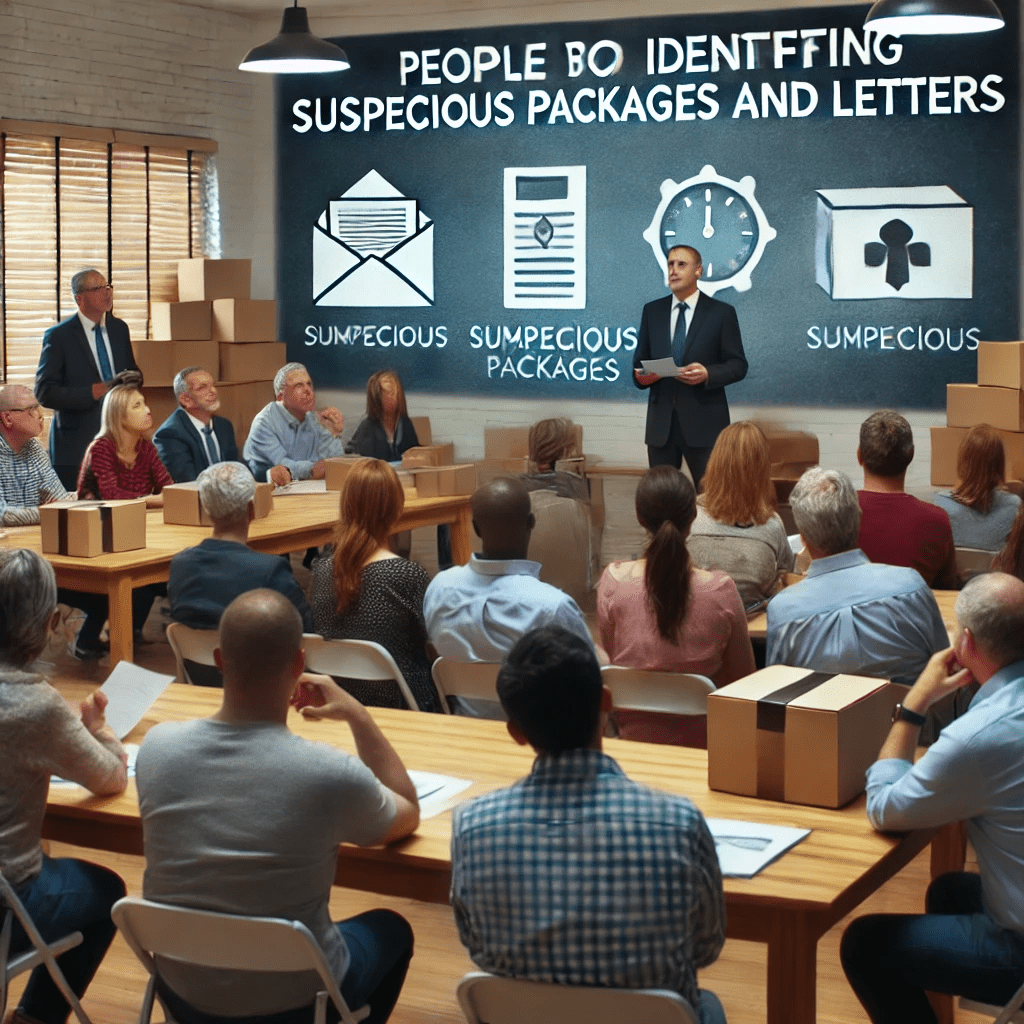Introduction
In today’s world, the threat of receiving a suspicious letter or package is a real concern. Identifying these potentially dangerous items is crucial for ensuring personal and public safety. This article explores the key indicators of suspicious letters and packages, providing detailed information on how to recognize, handle, and report them. By understanding these indicators, individuals can protect themselves and help prevent harmful incidents.

What Makes a Package Suspicious?
Unusual or Excessive Postage
One of the first signs of a suspicious package is the use of unusual or excessive postage. This can include a high number of stamps or a significant amount of postage that seems out of proportion to the package’s size or weight. Perpetrators often use excessive postage to avoid face-to-face interactions at postal counters.
No Return Address or a False Return Address
Another common indicator is the lack of a return address or the presence of a false return address. Legitimate packages usually have clear return information. A missing or dubious return address can signal that the sender wants to remain anonymous or untraceable.
Misspelled Words and Poor Handwriting
Packages or letters with misspelled words, poor handwriting, or handwritten addresses instead of printed labels can be suspicious. These errors might indicate an attempt to disguise the sender’s identity or to create an impression of innocence.

Strange Odors or Stains
Unusual smells, stains, or oily marks on a package can be a red flag. These could indicate the presence of hazardous materials, such as chemicals, biological agents, or explosives. Any strange or unexpected odor emanating from a package should be treated with caution.
Excessive Weight or Lopsided Shape
A package that is excessively heavy for its size or has an uneven, lopsided shape might contain dangerous contents. Explosive devices, for instance, can cause a package to weigh more than expected. If a package feels unbalanced or heavier on one side, it should be considered suspicious.
Unusual Labels or Markings
Packages with restrictive markings, such as “Personal,” “Confidential,” or “Do Not X-ray,” should be approached with caution. These labels may be attempts to prevent the package from being scrutinized closely. Similarly, any package with unusual symbols or unfamiliar logos could be suspicious.
Historical Incidents Involving Suspicious Packages
Notable Cases
There have been several high-profile incidents involving suspicious packages that underscore the importance of vigilance. For example, the Unabomber, Theodore Kaczynski, used mail bombs to target individuals, leading to deaths and injuries. Another case involved anthrax-laden letters sent to news media offices and U.S. senators in 2001, causing widespread fear and several fatalities.
Lessons Learned
These historical incidents have highlighted the need for improved screening processes and public awareness. They demonstrate the potential consequences of ignoring suspicious packages and emphasize the importance of timely reporting and intervention.

How to Handle a Suspicious Package
Do Not Touch or Move the Package
If you suspect that a package is dangerous, do not touch, move, or tamper with it. Handling a potentially explosive or hazardous package can trigger its contents and cause harm. Maintain a safe distance and avoid any direct contact.
Evacuate the Area
Evacuate the immediate area around the suspicious package to ensure the safety of everyone nearby. Clear the vicinity and make sure that no one approaches the package until authorities arrive. If you are in a building, follow the established evacuation procedures.
Notify Authorities
Immediately notify local law enforcement or security personnel about the suspicious package. Provide them with all relevant information, including the package’s location, appearance, and any other observations. If you are in a workplace, inform your supervisor or the designated safety officer.
Follow Instructions from Authorities
Once authorities are on the scene, follow their instructions carefully. They may need to secure the area, conduct further investigations, or call in specialized units to handle the package. Cooperate fully and provide any additional information they may need.

Preventative Measures and Best Practices
Training and Awareness
Organizations should provide regular training and awareness programs for employees to recognize and respond to suspicious packages. These programs should cover the key indicators, proper handling procedures, and reporting protocols. Employees should also be encouraged to stay vigilant and report any suspicious items immediately.
Secure Mail Handling Procedures
Implementing secure mail handling procedures is essential for reducing the risk of dangerous packages. This includes using mail screening equipment, establishing designated mail handling areas, and training mailroom staff to identify potential threats. Regular audits and updates to mail security protocols can help maintain a high level of safety.
Encourage Reporting
Creating a culture where reporting suspicious packages is encouraged and supported can significantly enhance safety. Employees and the public should feel confident that their concerns will be taken seriously and that appropriate actions will be taken promptly.
Case Studies of Suspicious Package Management
Corporate Example
In 2013, a corporate office in New York received a suspicious package that was addressed to a high-ranking executive. The package had excessive postage, no return address, and a strange odor. Following their training, the mailroom staff evacuated the area and notified security. The authorities were called, and it was discovered that the package contained hazardous materials. The swift response and adherence to protocols prevented any harm and underscored the importance of proper training and procedures.
Government Example
A government office in Washington, D.C., implemented rigorous mail screening procedures following the 2001 anthrax attacks. In 2018, these procedures identified a suspicious envelope containing white powder addressed to a senator. The mailroom’s quick response and the use of protective measures ensured that the substance was safely contained and analyzed without causing harm. The incident highlighted the effectiveness of thorough screening and rapid response.
Technological Advances in Mail Security
Mail Screening Equipment
Advancements in mail screening equipment have significantly improved the ability to detect suspicious packages. Technologies such as X-ray scanners, explosive trace detectors, and chemical analysis devices can identify potentially dangerous contents without opening the package. These tools are essential for high-risk areas such as government buildings, corporate offices, and postal facilities.
Artificial Intelligence and Machine Learning
Artificial intelligence (AI) and machine learning are increasingly being integrated into mail security systems. These technologies can analyze patterns, detect anomalies, and improve the accuracy of threat detection. AI-driven systems can also learn from previous incidents to enhance their predictive capabilities and reduce false positives.
Cybersecurity Integration
With the rise of cyber threats, integrating cybersecurity measures into mail handling procedures is becoming more important. This includes securing digital communication channels, protecting sensitive information, and preventing phishing attacks that could be delivered via mail. Combining physical and digital security measures provides a comprehensive approach to threat management.
Legal and Regulatory Framework
Postal Regulations
Postal services worldwide have implemented regulations to enhance the security of mail. These regulations include guidelines for handling suspicious packages, reporting protocols, and requirements for mail screening equipment. Compliance with these regulations is mandatory for postal services and businesses that handle large volumes of mail.
Workplace Safety Laws
Workplace safety laws require employers to provide a safe working environment, which includes measures to protect employees from suspicious packages. This involves implementing security protocols, providing training, and ensuring that mail handling procedures comply with legal standards. Non-compliance can result in legal consequences and increased risks.
Reporting Obligations
There are legal obligations for reporting suspicious packages to authorities. Failure to report can result in penalties and increased danger to public safety. Understanding and adhering to these obligations is crucial for individuals and organizations alike.
The Role of Public Awareness
Community Engagement
Public awareness and community engagement play a vital role in identifying and managing suspicious packages. Community programs and public service announcements can educate individuals on the key indicators and proper response procedures. Encouraging community involvement enhances overall safety and fosters a proactive approach to threat management.
Media and Communication
The media has a responsibility to report on incidents involving suspicious packages accurately and responsibly. Sensationalizing these events can cause unnecessary panic, while underreporting can lead to complacency. Balanced and informative reporting helps the public stay informed and vigilant.
Educational Initiatives
Educational initiatives in schools and workplaces can raise awareness about suspicious packages and the importance of reporting. These programs can include workshops, informational materials, and drills to ensure that everyone knows how to respond appropriately.
Future Trends in Mail Security
Advanced Detection Technologies
The future of mail security lies in the development of advanced detection technologies. Innovations in sensor technology, real-time data analysis, and portable screening devices will enhance the ability to identify threats quickly and accurately. These advancements will provide better protection for high-risk areas and everyday mail handling.
Enhanced Training Programs
Training programs will continue to evolve, incorporating the latest research and technology to improve effectiveness. Virtual reality (VR) and augmented reality (AR) training modules can provide immersive experiences that prepare individuals for real-life scenarios. Continuous updates and refresher courses will ensure that personnel remain informed about the latest threats and best practices.
Global Collaboration (continued)
be crucial for enhancing mail security worldwide. International partnerships can help standardize security protocols, improve threat detection, and streamline reporting processes. By working together, countries can more effectively combat the threats posed by suspicious packages.
Public-Private Partnerships
Public-private partnerships will play a key role in advancing mail security. Collaborations between government agencies, private companies, and research institutions can lead to innovative solutions and improved security measures. These partnerships can also facilitate the sharing of critical information and resources, helping to create a safer environment for everyone.
Implementing a Mail Security Program
Assessing Risk Levels
The first step in implementing a mail security program is to assess the risk levels associated with your organization. This involves identifying potential threats, evaluating the likelihood of receiving suspicious packages, and determining the impact of such incidents. Risk assessments should be conducted regularly to keep up with evolving threats.
Developing Security Protocols
Based on the risk assessment, develop comprehensive security protocols for handling mail. These protocols should include procedures for screening, identifying, and reporting suspicious packages. Ensure that all employees are familiar with these protocols and understand their roles in maintaining mail security.
Training and Drills
Regular training and drills are essential for ensuring that employees can effectively respond to suspicious packages. Conduct training sessions that cover the key indicators of suspicious mail, proper handling procedures, and reporting protocols. Practice drills can help employees stay prepared and confident in their ability to manage potential threats.
Utilizing Technology
Invest in the latest mail screening technologies to enhance your organization’s security measures. This may include X-ray scanners, explosive trace detectors, and chemical analysis devices. Stay informed about advancements in technology and upgrade your equipment as needed to maintain a high level of security.
Continuous Improvement
Mail security programs should be continuously evaluated and improved. Regularly review your protocols, training programs, and technological tools to identify areas for enhancement. Solicit feedback from employees and security personnel to ensure that your program remains effective and up-to-date.
Conclusion
Understanding and recognizing the indicators of a suspicious letter or package is crucial for maintaining safety and security. By being aware of the signs, following proper handling procedures, and promptly reporting any concerns, individuals and organizations can protect themselves and their communities from potential threats.
Advancements in technology, comprehensive training programs, and strong collaboration between public and private entities will continue to enhance mail security. Staying vigilant and proactive is essential for preventing incidents and ensuring a safe environment for everyone.
By implementing effective mail security programs and fostering a culture of awareness and responsibility, we can mitigate the risks associated with suspicious packages and contribute to a safer society.
